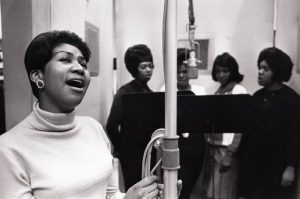Matthew Baxter joined Caplin as Head of UX Design in December 2012
Leading Caplin’s UX Design team from research through to visual design, Matthew is focused on ensuring Caplin products are appropriate, intuitive, fit for purpose and a pleasure to use and look at.
Matthew takes two minutes to tell Jennifer Reid a little bit more about leading UX design forward in real-time trading.
Q: You’ve had a really interesting career as a creative thinker. Tell us what attracted you to UX.
A: For a quiet life? No, it’s the opposite. Throughout my career I’ve taken complex information and put it in front of people who need to make use of it in the best way for them, and for the client. Whether it’s television news, staff development or FX trading, the challenges are the same: Innovating and improving user experience is a broad discipline, not a webby nicety, it’s the core of all good design. At Caplin the need for clarity, speed of comprehension and action, and the projection of brand values are all amplified by the nature of the domain.
Q: Everyone’s got their own definition of UX. Tell us yours.
A: Well, I’m not a fan of UX being unhitched from design and engineering, because I think what we do is virtual product design. When you design a car it has to work right, look right and feel right, what we do is no different.
Q: In 5 sentences, tell us what you do in a typical day at Caplin.
A: I think I can do it in 5 words; look, listen, think, decide, do. Although I could replace ‘do’ with ‘delegate’, and there is also a fair bit of talking involved. So it could be; absorb, consider, conclude, convince & act. Either way it’s fun. This is five sentences I notice.
Q: Last tech gadget you bought?
A: Depends what you call a gadget I suppose. I don’t think I buy ‘gadgets’, but the last technical things that I got because I liked them more than I needed them were apps for my iPhone; ‘Solar’, a weather app, because it’s so beautiful and ‘Linxy’ a dictionary which gives you definitions of words, live, as you point the camera at them, because it made me say “Wow” out loud like a child.
Q: What are you favourite UX books or resources?
A: As I think we are actually in the product design business, Raymond Loewy’s book ‘Industrial Design’ does it for me. Loewy invented what America looks and feels like – twice. Once with the opulent, excessive, overtly futuristic streamlined 40’s, and then in the clean-cut, slick, spare, modernist late 50’s and early 60’s. Always functional and – yes I’m going to say it – a bit sexy, and always projecting joy and optimism. Loewy had a framed letter on his desk from the astronauts who used Space Lab thanking him for making their environment more functional and a pleasure to live in – if that’s not a UX success I don’t know what is.
As for my favourite resource, it’s my team here at Caplin Systems and people like Paul Blank and Scott McLeod who are so good at communicating user and business needs, and demand more and better, from us every day.
Q: Creative thinkers often get inspiration from everyday objects or experiences. What inspires your thinking?
A: Music inspires me: I once attended a lecture on the nature of genius by Dave Stewart. He broke the Aretha Franklin song ‘Until you come back to me’ down to the component tracks, and was unable to find a single flaw. Every isolated ‘doo-wah’, drum break and guitar flourish was perfect – but meaningless. On bringing it all back together he found it was still flawless, but now it had soul. Now it was genius. So it was context and concerted effort that made it a work of genius. That’s inspiring.
Also, there has been a renaissance in ‘statement’ architecture in London, and I find something inspiring to look at every day as I walk from Waterloo into the city, you don’t have to like it all but you have to admire the ambition and guts it demonstrates.
Q: Where is UX going? What are you excited about?
A: Some physical tools and machines have had thousands of years to become ‘natural’ in use, whereas no widely used virtual interaction has had it’s fortieth birthday yet. It’s no wonder we sometimes resort back to imitating familiar physical activity. But a generation is coming that, through gaming and social media, is comfortable interacting virtually with the real world and ‘really’ with the virtual world: All the lines are blurred. Forever. For me that’s weird, but for my children it’s everyday. Once people who interact with technology ‘naturally’; unthinkingly are calling the shots we may be cut loose from reiterative and legacy-based thinking forever.
Uh-oh.





